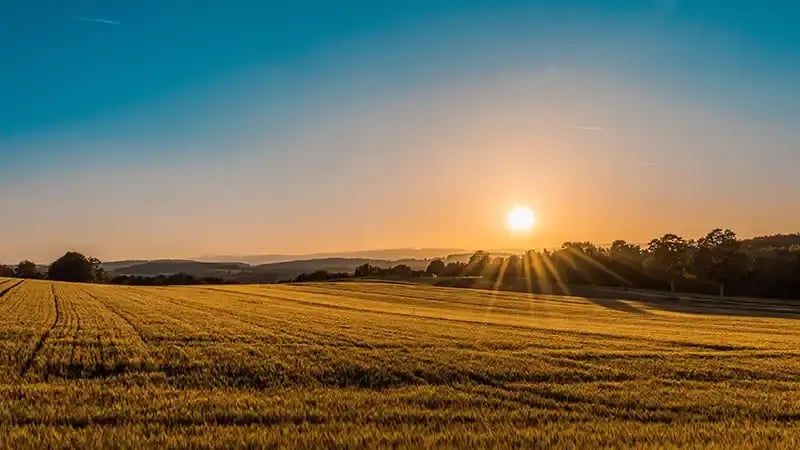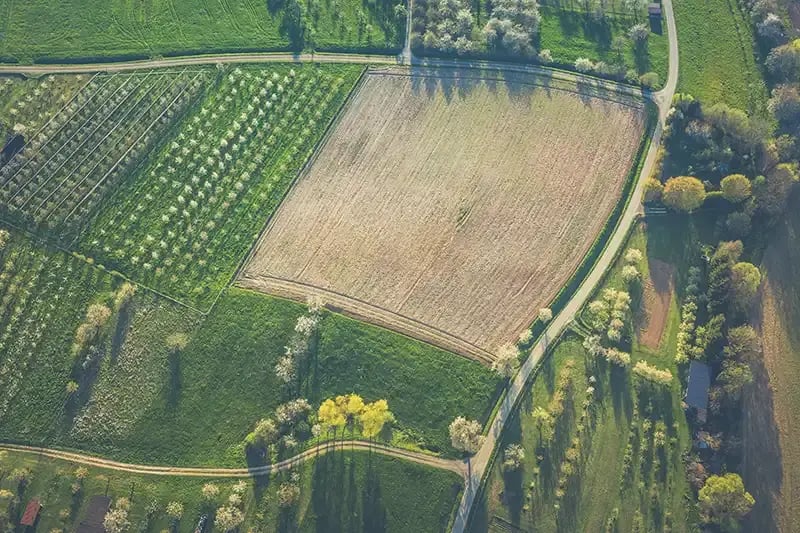When it comes to property development, not all land is created equa - and agricultural land is a prime example.
Understanding Agricultural Land Classification (ALC) early in your site assessment can save you months of headaches, costly surveys, and even planning refusals. Think of it as knowing which fields are fertile ground for opportunity and which are likely to be a thorny planning pickle.
In this guide, we’ll cover what ALC is, the main grades of agricultural land, how to distinguish between grade 3a and 3b, and how developers can use LandInsight to make data-led feasibility decisions.
Table of Contents
Key Highlights
-
ALC is a grading system for farmland quality, ranging from grade 1 (excellent) to grade 5 (very poor).
-
BMV land (grades 1, 2, 3a) receives the strongest planning protection.
-
Grade 3 land requires careful assessment to distinguish between 3a and 3b, often with a soil survey.
-
ALC evidence strengthens planning submissions and can be structured using a reusable template.
-
Development opportunities vary: lower-grade land suits conversions and offsetting; BMV land is typically unsuitable for new builds.
-
LandInsight allows data-led feasibility checks by layering ALC with constraints, ownership, and availability information.
What is Agricultural Land Classification?
Agricultural Land Classification (ALC) is a system used in England to assess the quality and versatility of farmland. It categorises land into grades 1-5, reflecting its potential for agricultural use. LPAs, developers, and planners use ALC to determine the suitability of land for development, conversions, or offsetting. Essentially, it’s the first check in identifying whether a site is “good to go” or better left for crops than houses.

Main Agricultural Land Classification Categories
ALC divides land into five grades based on soil quality, climate, and site factors. Grades 1, 2, and 3a are classified as Best and Most Versatile (BMV) land, which enjoys stronger protection under the planning system.
| ALC Grade | Description | Planning Importance |
|---|---|---|
| 1 | Excellent quality | BMV – strongly protected |
| 2 | Very good quality | BMV – strongly protected |
| 3a | Good quality | BMV – protected |
| 3b | Moderate quality | Less protected |
| 4 | Poor quality | Generally not protected |
| 5 | Very poor quality | Generally not protected |
Pro tip: Early identification of BMV land helps avoid wasting time on sites likely to face planning restrictions.
What is Grade 3 on the Agricultural Land Classification?
Grade 3 land sits in the middle of the spectrum, and LPAs often require careful assessment to split it into 3a (good quality) or 3b (moderate quality). This distinction can affect whether a site is considered BMV and therefore the strength of planning protections.
-
LPAs may request a soil survey to confirm the grading.
-
Early evidence helps developers avoid investing in unsuitable sites.
-
Using LandInsight, you can layer ALC with ownership and constraint data to quickly highlight which sites warrant deeper investigation.
3a vs 3b Assessment Checklist
When assessing grade 3 land, consider the following:
-
Soil texture and composition – loam, clay, sand? How easily can it be farmed?
-
Soil wetness and drainage – is it prone to water logging or poor drainage?
-
Droughtiness and water availability – sufficient water for crops or development?
-
Site factors – slope, field layout, existing features or obstacles.
-
Climate factors – exposure to frost, rainfall patterns, or extreme weather.
-
Existing survey evidence – prior soil reports, historical land use, or LPA records.
ALC Evidence Template for Planning Applications
A structured approach to ALC evidence strengthens planning submissions. Here’s a template developers can adapt:
-
Site Details & Description – location, size, current use.
-
Methodology Used – desk-based review, field surveys, soil analysis.
-
Desk-Based Review – historical maps, aerial imagery, previous classifications.
-
Field Survey Findings – soil type, drainage, and other site factors.
-
Grading & Assessment – assign grade with justification.
-
Supporting Evidence – maps, soil data, climate information, and photos.
Using LandInsight, you can quickly overlay these elements with constraints, availability, and ownership data for a comprehensive submission.
How Can Developers Use Agricultural Land?
ALC informs feasibility, planning, and development strategy. Depending on the grade, different opportunities are available:
Agricultural Conversions
Lower-grade land or non-BMV sites are ideal for barn or farm conversions. For example, a well-positioned barn can be repurposed into a hotel or residential property under Class R.
New Developments
BMV land (grades 1, 2, 3a) is generally unsuitable for new residential development due to planning restrictions. Sites graded 3b or lower may offer feasible options - but developers should provide early ALC evidence to LPAs to demonstrate suitability.
Offsetting
Lower-grade agricultural land is more appropriate for nutrient neutrality or biodiversity net gain offsetting, carrying fewer protections. Accurate ALC evidence helps developers identify viable offset sites early, avoiding wasted time and cost.
How to Assess ALC in LandInsight
LandInsight allows developers to make data-led decisions quickly. Here are three workflows:
Initial ALC Screening
-
Search for potential sites in your area of interest.
-
Overlay the Agricultural Land Classification map.
-
Identify high-level grades to focus further investigation.
Checking for Grade 3a vs 3b
-
Filter for grade 3 land.
-
Cross-reference with soil type, slope, and drainage layers.
-
Identify sites requiring a soil survey for LPA submission.
Layering ALC with Constraints and Ownership
-
Add constraints like Green Belt, flood zones, or planning designations.
-
Overlay ownership data to identify which sites are available.
-
Prioritise sites that balance feasibility and opportunity.

Conclusion
Early ALC assessment is essential for reducing planning risk, identifying viable sites, and avoiding costly dead-ends. By using LandInsight, developers can layer ALC, constraints, availability, and ownership data to make informed decisions faster - and with far less mud on their boots.
Find sites faster and make smarter development decisions today.
FAQ
What is classified as agricultural land?
Land used for farming or capable of farming, including crops, pasture, and horticulture. It’s graded based on quality, soil, and climate to guide planning decisions.
How do I know if my land is classed as agricultural land?
Check the Agricultural Land Classification map, review local planning records, and consider soil and field characteristics.
How do I know the classification of the land?
Grades range from 1–5; best and most versatile land is 1–3a. Soil surveys may be required to confirm grade 3a vs 3b.
What is grade 3 agricultural land classification?
Grade 3 is good quality land; it’s subdivided into 3a (BMV) and 3b (moderate). LPAs may require soil surveys and evidence to determine the exact grade.
Request an Ecosystem Demo to see how LandInsight can support your ALC assessments.

